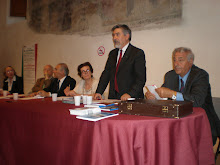July
9th 2014|
After
a brief resurgence European coal demand fell in 2013, signalling a long-term
decline in EU coal use.
In 2011 and 2012, European
coal consumption grew, driven by demand from the power sector. Given the EU's
strict emissions-reduction goals, this was unexpected, and prompted speculation
that the high-carbon fuel had begun a sustained revival. But coal demand
dropped in 2013, partially reversing gains made in the previous two years (see chart).
In the longer term the prospects for coal-fired power generation, which
accounts for three-quarters of European coal demand, are negative. Air-quality
regulations will force plant closures, and renewable energy will continue to
surge, while in general European energy demand will be weak. The recent
mini-boom in coal-burning will prove an aberration.
With nuclear, coal
traditionally supplied the bulk of Europe's baseload power demand. But from the
1990s natural gas gained market share; so too, more recently, has renewable
energy. The role of coal in keeping Europe's lights on shrank from 39% of
generation in 1990 to 25% in 2010. Overall EU coal consumption fell by 21%
between 1995 and 2010. However, in 2011-12 EU coal demand in Europe shot up by
9% from 2010 levels (though it remained below pre-financial crisis levels).
Moreover, consumption increased across all major European coal-consuming
nations: Germany, Poland, UK, Greece, the Czech Republic, Spain, Italy and the
Netherlands. The fuel's share of power generation was boosted in key European
markets between 2010 and 2012: in Germany, for instance, from 41% to 45%; and
in the UK, from 26% to 34%.
Two factors lay behind
Europe's returning appetite for coal. First, owing mainly to the boom in US
shale-gas production, coal's price advantage over gas grew. Reduced US coal
demand forced producers there to seek export markets, including in Europe,
where the resulting influx of coal imports, helped by weak energy demand,
lowered prices. In 2008-13, the average price of coal in north-west Europe fell
by 45%. In contrast, European gas prices weakened only marginally, offering an
incentive for utilities to switch from gas to coal.
Second, the global recession
hit European industry hard. One result of this was that greenhouse-gas
emissions declined sharply, but the downturn also depressed carbon-credit
prices offered on the EU Emissions Trading System (ETS). Whereas carbon
allowances had traded at around €30 in 2008, by 2013 they were worth just €5.
Thus, the financial penalties for utilities using coal became less severe,
further enhancing the fuel's competitiveness versus gas.



















































































.jpg)
.jpg)

Nessun commento:
Posta un commento